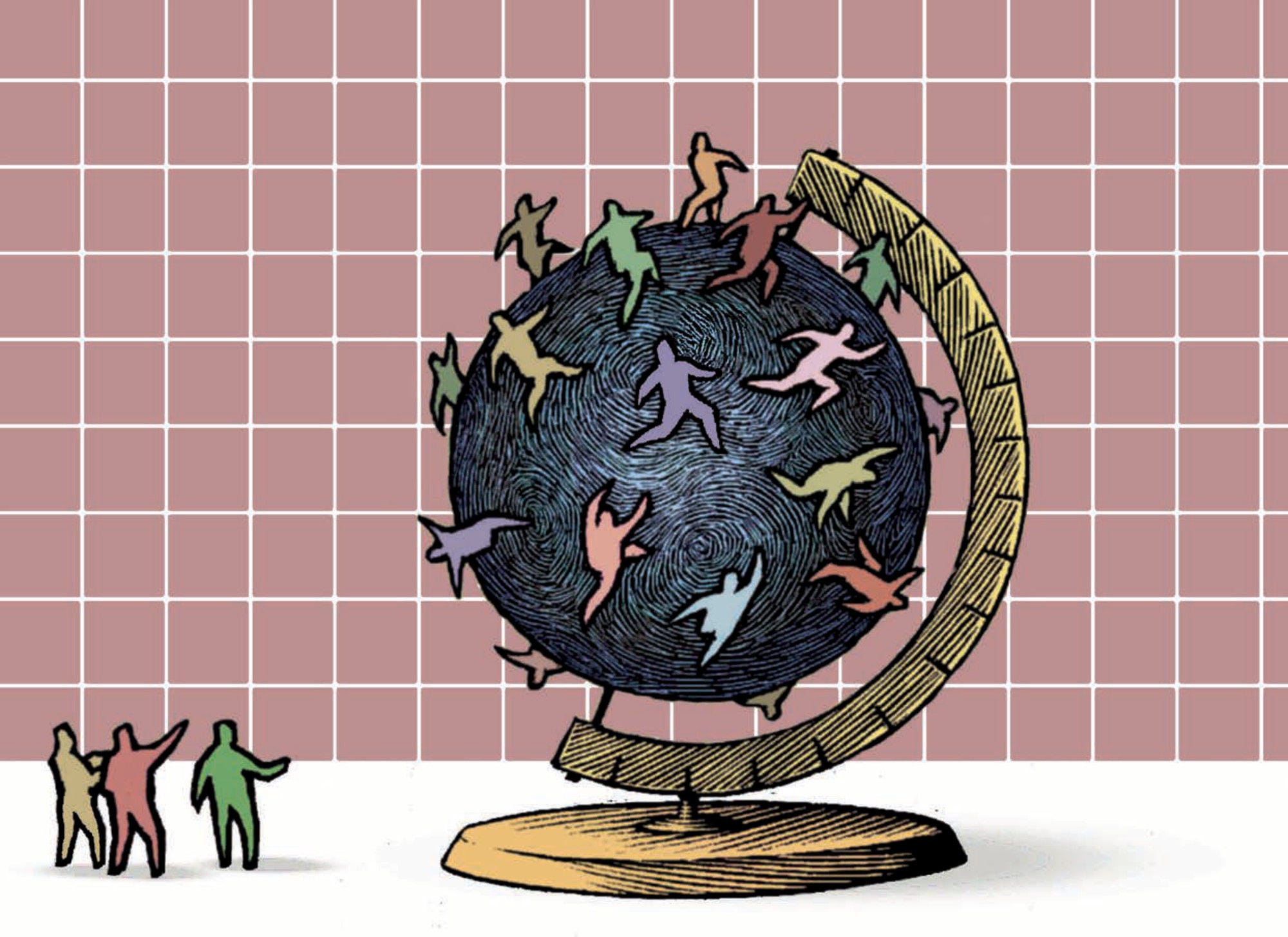In 2017, 9 600 new immigrants obtained a residence permit longer than 12 months in Lithuania (excluding EU citizens), 65.2% more than in 2016. This figure comprises 77.9% labour migrants, 9.4% family members (including accompanying family), 6.1% who came for educational reasons and 6.5% other migrants.
Around 400 short-term permits were issued to international students and 100 to temporary and seasonal labour migrants (excluding intra-EU migration). In addition, 2 300 intra-EU postings were recorded in 2017, an increase of 12.0% compared to 2016. These posted workers are generally on short-term contracts.
Ukraine, Belarus and Russia were the top three nationalities of newcomers in 2017. Among the top 15 countries of origin, Ukraine registered the strongest increase (2 800) and Russia the largest decrease (‑200) in flows to Lithuania compared to the previous year.
In 2018, the number of first asylum applicants decreased by 26%, to reach around 400. The largest groups of applicants come from Tajikistan (100), Russia (50) and Iraq (35). The largest increase since 2017 concerned nationals of Tajikistan (70) and the largest decrease nationals of Syria (‑200). Of the 300 decisions taken in 2018, half were positive.
Emigration of Lithuanians to OECD countries increased by 13.7% to 32 000. 31.3% of this group migrated to Germany, 24.6% to the United Kingdom and 8.4% to Norway.
In September 2017, Seimas of the Republic of Lithuania endorsed the Strategy for the Demographic, Migration, and Integration Policy for 2018‑2030. The strategy was adopted on 20 September 2018. Its main objectives are positive population change and a balanced age structure. The document establishes three goals related to developing a family-friendly environment, managing migration flows, and integrating senior citizens into public life. The Strategy provides for encouraging return migration as well as balanced arrival of foreign nationals, through attraction, admission, integration and outreach policy. The Strategy also includes the aim of pursuing an effective diaspora policy.
From January 2018, conditions for foreign entrepreneurs have been relaxed. Accordingly, the job creation requirement was lowered from three to two employees.
In 2018, in order to accelerate immigration procedures, the Migration Department implemented a list of approved companies (sponsors) which met a specific range of criteria. Approval is valid for three years and is renewable. An approved company may recruit foreigners without submitting a work permit to the Migration Department, providing a copy of the employment contract or demonstrating sufficient funds (however, foreigners are still obliged to have a work permit).
From March 2019, important changes to work permit rules were implemented. Workers arriving for non-highly qualified jobs will no longer have to prove qualifications or recent relevant employment experience to the Migration Department; this responsibility now lies with the employer. For workers whose occupations are on the national Shortage Occupation List, the employer must ensure that the foreign recruit has documents confirming qualifications (diploma, certificate, etc.) and at least one year of experience in the field within the previous two years.
Applicants for EU Blue Cards, however, will continue to have to demonstrate evidence of their qualifications to the Migration Department.
Workers changing employers or position are no longer required to apply for a new work permit. Further, the contract no longer needs to be registered with the local office of the Employment Service.
In July 2018, the government expanded the Occupational Shortage list for highly-qualified jobs from 27 to 49 occupations. IT occupations figure prominently among the new occupations on the list, as well as manufacturing trade occupations. The Shortage List facilitates processing and allows a lower salary threshold – 1.5 times the average wage, rather than three times.
Lithuania has introduced a 12-month post-graduation job-search extension for international students. After completion of studies, students have three months to apply for this residence permit in order to seek employment.
In 2018, Lithuania started creating an on-line migration process management system, E-MIGRIS, to cover most application procedures. Documents will only need to be presented in person once applications are approved and the applicant needs to collect the visa or permit.
New measures to support the return of Lithuanian emigrants were introduced in 2018. These include bolstering the Information Centres and allowing toll-free calls from Norway and Ireland; psychological support; measures to provide individual support to children of returning Lithuanians; and reimbursement of costs incurred obtaining return-related documentation.
For further information:
www.migracija.lt
www.stat.gov.lt/en
http://emn.lt/
